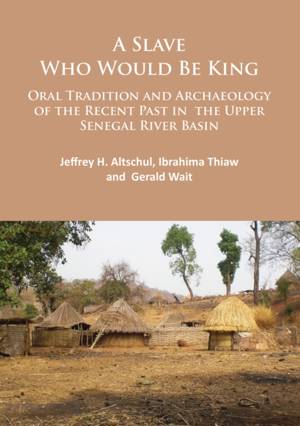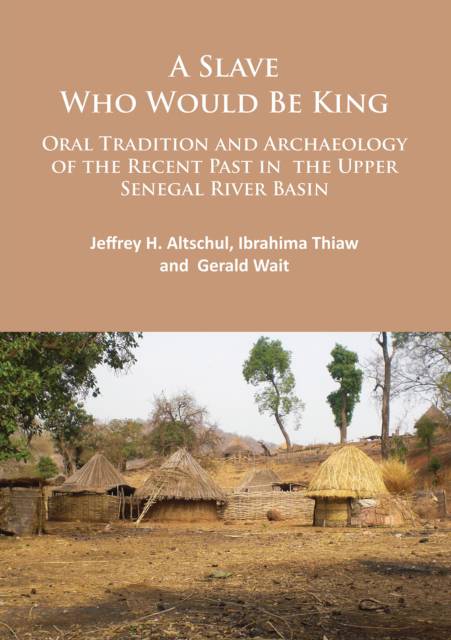
- Afhalen na 1 uur in een winkel met voorraad
- Gratis thuislevering in België vanaf € 30
- Ruim aanbod met 7 miljoen producten
- Afhalen na 1 uur in een winkel met voorraad
- Gratis thuislevering in België vanaf € 30
- Ruim aanbod met 7 miljoen producten
Zoeken
A Slave Who Would Be King
Oral Tradition and Archaeology of the Recent Past in the Upper Senegal River Basin
Jeffrey H Altschul, Ibrahima Thiaw, Gerald Wait
Paperback | Engels
€ 81,45
+ 162 punten
Omschrijving
From March 2009 Statistical Research Inc. (USA), Nexus Heritage (UK) and the Institut Fondamental d'Afrique Noire (Dakar, Senegal) jointly undertook an integrated programme of cultural heritage research and investigation in the Sabodala area of Senegal. This was part of an environmental and social impact assessment in compliance with Senegalese law and international best practice. The principal investigators were Jeff Altschul (SRI) Gerry Wait (Nexus) and Ibrahima Thiaw (IFAN). This report is the outcome of those investigations and makes a significant contribution to the archaeology and ethnography of eastern Senegal. Combining ethnographic and archaeological data yields a picture of a period of intense social change that occurred at the end of the nineteenth century and extended well into the mid-twentieth century. This involved the overturning of previous norms by social groups of mixed ethnicity, who proceeded to create new social work-arounds for previous ethnic prohibitions. It also probably involved the final end to slavery, but possibly only within living memory. It seems likely that some sites-archaeological as well as traditional sacred properties-provide tangible links between the current villages and a highly contested and emotionally charged past. To paraphrase the American novelist, William Faulkner, the past in Sabodala is never dead; in fact, it's not even past.
Specificaties
Betrokkenen
- Auteur(s):
- Uitgeverij:
Inhoud
- Aantal bladzijden:
- 324
- Taal:
- Engels
Eigenschappen
- Productcode (EAN):
- 9781784913519
- Verschijningsdatum:
- 31/05/2016
- Uitvoering:
- Paperback
- Formaat:
- Trade paperback (VS)
- Afmetingen:
- 203 mm x 290 mm
- Gewicht:
- 1065 g

Alleen bij Standaard Boekhandel
+ 162 punten op je klantenkaart van Standaard Boekhandel
Beoordelingen
We publiceren alleen reviews die voldoen aan de voorwaarden voor reviews. Bekijk onze voorwaarden voor reviews.











